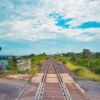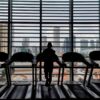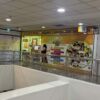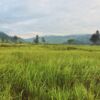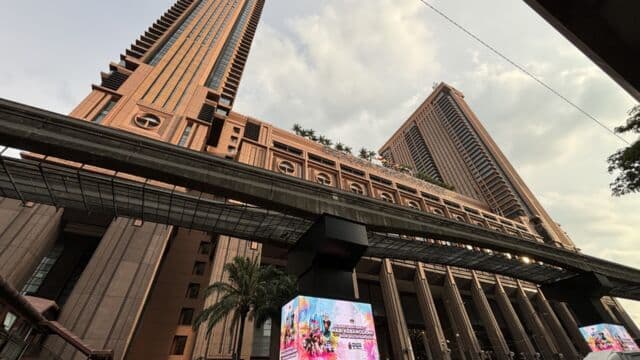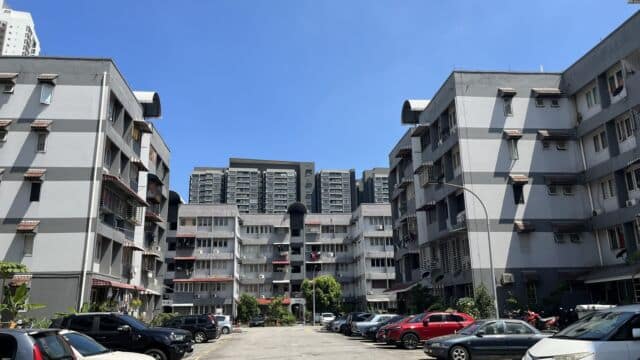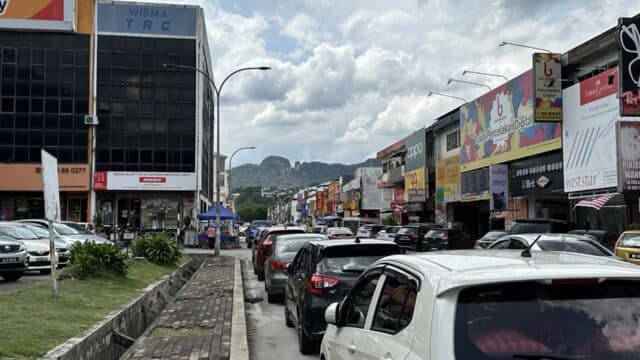A Shadow Lurks on KL’s Edge
Photo: Loo Pei Yi
Jinjang | 2,135 words
Translated from Chinese by Catherine Xin Xin Yu
“I fell asleep on the bus once. When I woke up, it didn’t look like Kuala Lumpur. I was in some unfamiliar, deserted backcountry.” As my friend complained about the difficulties of moving around in this city, I was inadvertently transported back to the place I came from.
Until I was fifteen I lived in a temporary residential area known as the Jinjang longhouses. They were located at the edge of Jinjang New Village, at the point where all the roads ended.
It was troublesome to get in and out. At the turn of the millennium, only one bus line ran from here to the city center, fifteen kilometers away. It will come. Just keep waiting. As a child, I always feared that the bus wouldn’t show up. But thinking back, I don’t actually recall a single time when it didn’t arrive. Putting aside my feelings of powerlessness and anxiety, I eventually understood that unpunctual public transport is a perennial problem in my part of the country. Since the Jinjang longhouses were the line’s terminal stop, there were very few passengers onboard at first. The bus conductor would cling to the door leisurely, hollering “Kota Raya, Kota Raya, Kota Raya” along the way. But by the time we reached the heart of Kuala Lumpur, the bus would be so packed it was hard to breathe.

The landscape my friend saw when he woke up, he told me, was not just physically distant, but felt like a different space-time. I took his story as an opportunity to tell him about where I grew up.
*
The place I come from, Jinjang, used to be a so-called “new village”, one of hundreds of concentration camps.
In the popular imagination, Jinjang’s current residents have been settled there for decades, since their parents’ or even grandparents’ generation, due to its “new village” status. Malaysians would immediately think of the historical background of the 1950s: rubber plantations, mines, state of emergency. Half a century ago, the British colonial authorities set up the “new villages” for Chinese people on the Malay peninsula to cut off communication between them and the Malayan communists, who were mostly ethnic Chinese, then waging a guerrilla insurrection. Five hundred thousand people were relocated into these camps, their daily movement in and out monitored. Checkpoints were set up outside barbed wire fences.
The “newness” of new villages, as they were passed down from the previous century into this one, disappeared. The fences were eventually removed, and Jinjang gradually merged into the town of Kepong. However, the typical image of Jinjang doesn’t include my home—the Jinjang longhouses. They were another “camp” built in the 1990s, at the new village’s edge. Connected by neatly planned and numbered roads, the settlement was built to house people who had been displaced by demolitions and redevelopments in areas around Kuala Lumpur, including Cheras, Salak Selatan, Puchong, and Segambut.
The longhouse should have existed for about five years only, having been designed to be erased when it grew old—the thousands of evicted residents had been expected to relocate into new low-cost units in five years. In reality, it took another twenty years.
In the ‘90s, I was still a child keen on roaming the streets, unwilling to let slip any opportunity to get out. We had a pink booklet at home, rectangular in shape and about twenty pages long. It recorded the rent we paid to the government, about a hundred ringgit per month, and acted as proof that we lived in Jinjang.
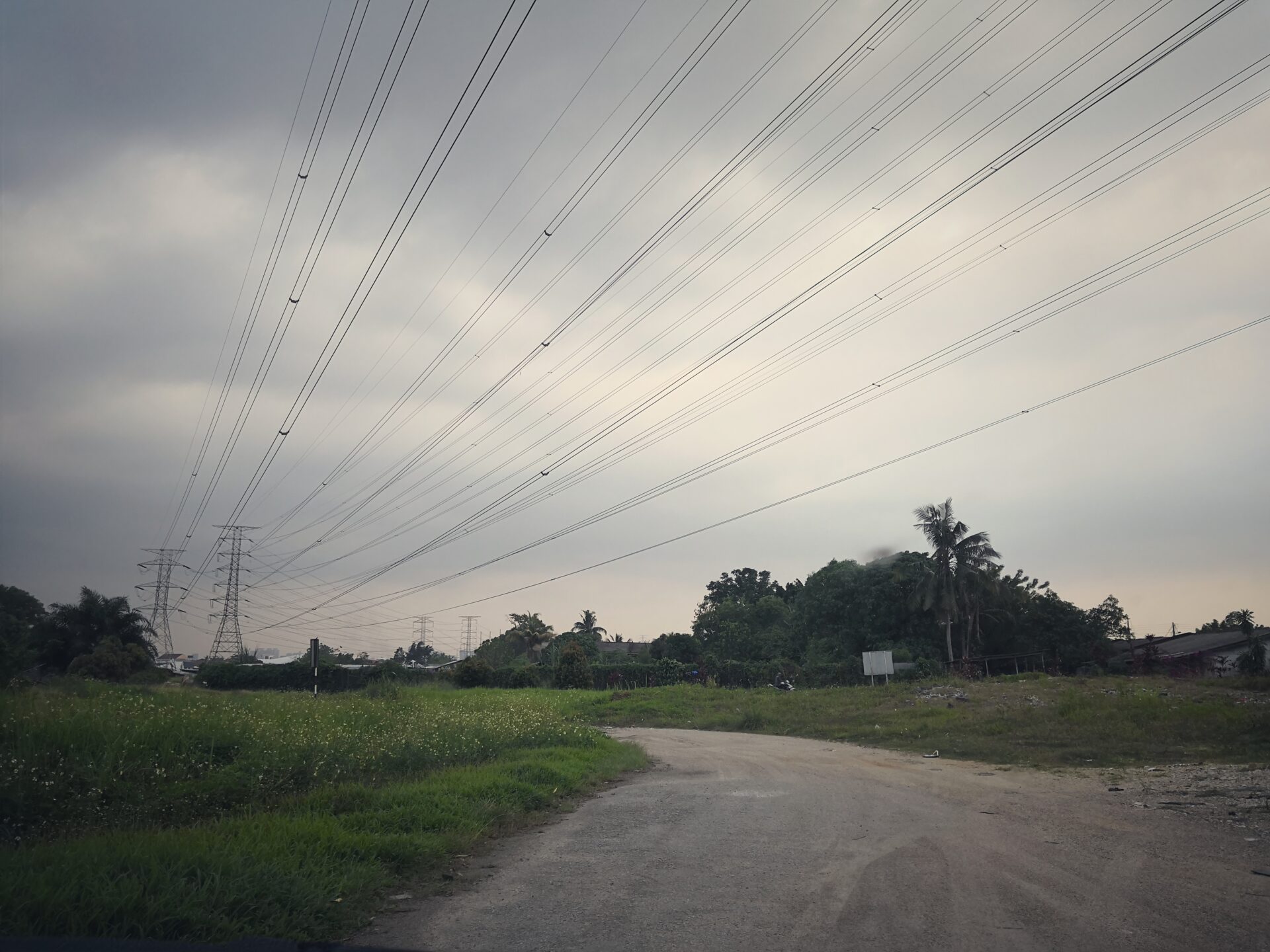
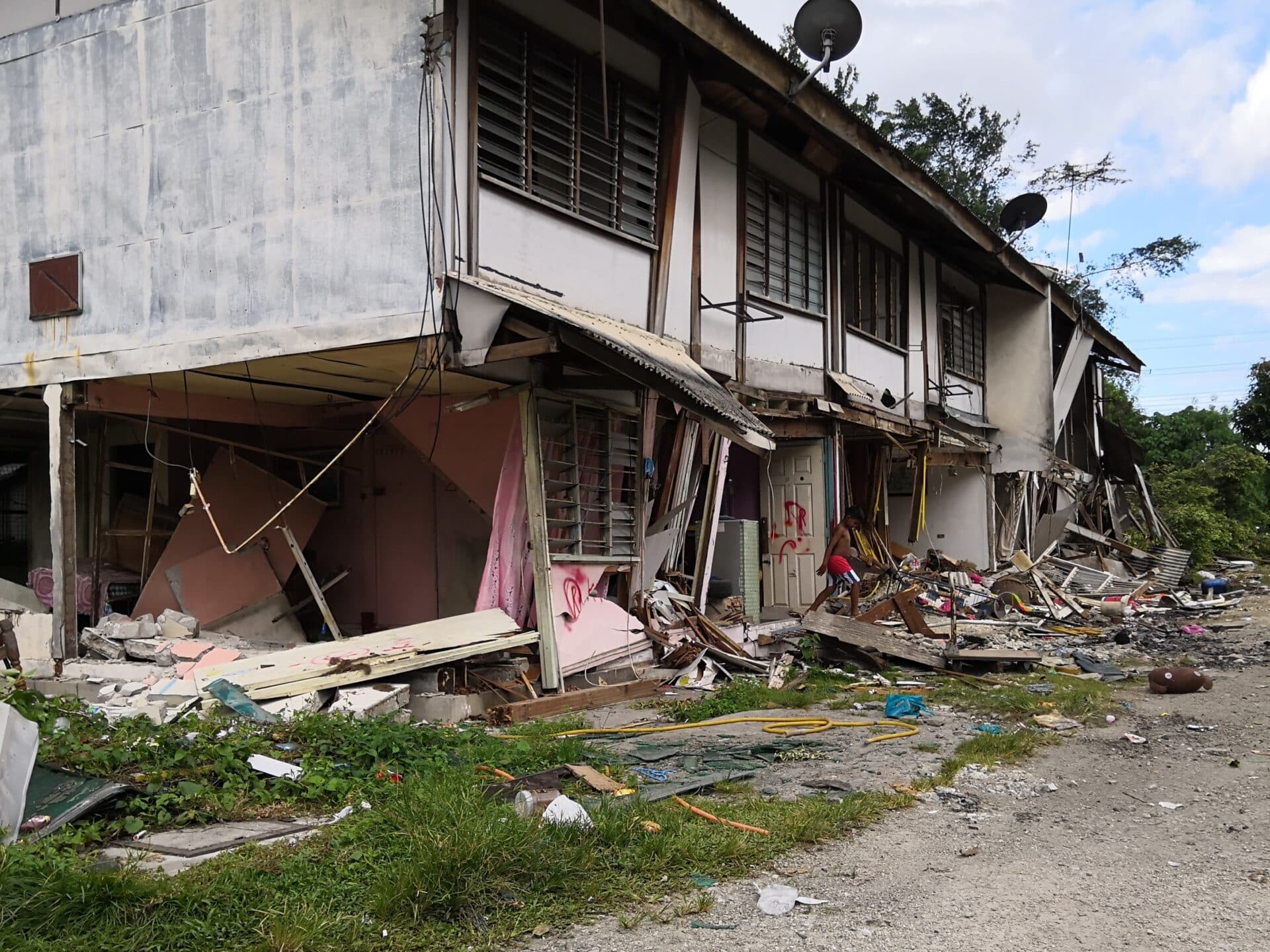
Longhouse residents and new villagers shared public infrastructures like state-run clinics, schools, and police stations. We also shared hawkers on motorbikes who sold rice noodle rolls, baozi, siu mai, marinated bushmeat, bread and ground coffee, or cars and trucks selling soy sauce, pastries, and fruits. For Jinjang longhouse residents, the bazaar on Kepong Road to the north was a bit far, whereas the sellers who made the rounds sporadically provided more convenience. Life in the longhouses was both similar and different to that in the new village, where there were no ethnic Malay shops and night markets, and where people argued in Cantonese or Hokkien but never Malay.
*
The longhouses could be one or two-story, but either way, every house had two rooms. We lived in Zone C, where buildings were two-story. The upper story had wooden flooring, while the ground floor was untiled and the patchy grey foundation was exposed.
My parents initially thought they could move back to their old “tribe” south of Kuala Lumpur. In our first year here, the four of us squeezed into one room, while the other was used to store boxes that we hadn’t sorted through yet. We only began organizing the space much later, when it became clear that there was no chance to return.
It is never a free choice where to settle. Every place has its “shadow”.
The shadow cast over Jinjang was not natural but artificial, caused by the rapid growth in Kuala Lumpur’s urban population. As KL grew, it left behind a massive trail of rubbish, like a creature shedding dead skin or its tail. Rubbish ended up in Jinjang’s landfill, which was operating above its maximum capacity and was swelling into a hideous mountain.
Local residents called it the Jinjang Rubbish Mountain, but its official name was Beringin Landfill, an attempt to detach the site from the local community. Its name was not the only obscuring device. Few people knew how to actually reach the landfill from the new village, and we rarely saw rubbish trucks coming in or out. Looking up at the sprawling rubbish mountain, we didn’t know how to measure the blotchy slope that obstructed half of our sky, but we usually said it was several stories tall. Years later, I found out from a newspaper that, after operating for over a decade, the landfill had reached 80 meters.
Living beside the rubbish mountain, we were oblivious to any impending disaster. As long as we put up with the stench, the mountain coexisted with us peacefully.
Normality existed even in a sunken borderland like ours.
The noise of lorries driving into narrow alleyways announced the setting up of temporary marquees for weddings or funerals. People would begin their drinking parties or funerary recitations as soon as night fell. You might hear clamorous Thavil drums and Nadaswaram reeds after dinner, which summoned residents to the crossroad to wait for sedans carrying deities to pass by. Some just watched while others prayed. Temple staff would light up prayer powder for each person who went forward to pray. Chinese Malaysians weren’t exactly believers, many didn’t know the deities in the sedans, nor could they even catch a glimpse of the idols, but they were still happy to pray. Prayers gave structure to our chaotic days. Morning and evening prayers rose daily from the other side of Zone C, announcing each day’s beginning and end.
But one time, smoke rose up from nearby, and that was when we finally recognized the shadow that dominated our lives. The rubbish mountain had caught fire. Its camouflaged name and hidden entryways did nothing to prevent disaster. Though the fire didn’t spread, it burned for weeks at the bottom of the rubbish mountain, producing endless smouldering miasma. The fire fundamentally changed how we perceived the distance between us and the rubbish mountain. We began wearing masks and kept our doors and windows tightly shut, but we still had trouble falling asleep at night, and going to school was a nightmare too. The outer layer of the rubbish mountain was gradually turning into ash, filling our lungs, covering the cars on the road, and falling on school benches and chairs.
In the fifteen years I lived in Jinjang, I never knew any ragpickers or waste-processing workers. Nor did I ever find out which roads brought rubbish trucks to the landfill. Though eyes can begin to see shapes once they’ve adjusted to the dark, we who were trapped in this residential reserve could not make sense of the immense yet nebulous shadow. It was the quintessence of evil, which people sought to ignore. We could only endure, since improvements were unimaginable—and we still clung to the idea that we would move away, eventually.
*
From my limited perspective as a child, I wasn’t aware that my home was derelict and forsaken.
But eventually, at times when I went out with my mother, anxiety began creeping up on us.
The way we gauged the weather in Jinjang was different from other places. We would first notice a change in smell, not an overcast sky. The air before storms was stagnant and murky, and the scent of rot became stronger. As rain fell, the gutter in front of our door would be clogged with mud and weeds. The rainwater, with nowhere to drain, flooded the roads and temporarily concealed the potholes. My mother, holding an umbrella, would help me step across puddles on my way to private lessons in a unit three streets away.
The streets were all similar. But in my mother’s eyes, the further a building was from the main road, the more dangerous it was. Everytime we went out, she would repeatedly tell me which route to take and which places to avoid. We would pass a meadow on the way, in a corner of which was a small playground with slides, swings, and a seesaw. The facilities were dilapidated, practically a ruin. This sight and my mother’s reminders were omens that planned repairs and renewals would never move forward.
Because those promises were perennially overdue, the Jinjang longhouses became completely run down. Many residents, including my family, waited futilely for new rental units to be assigned to us, and eventually decided to look for our own solutions. Those who chose to stay—or homeless families who moved in later—were stuck in hopeless conditions. When the People’s Housing Project was wound up in 2018, the longhouses were demolished immediately. The land was promptly sold to real estate developers to build condominiums.
*
As for the rubbish mountain, it was officially shut down in 2006. Now it’s covered with thick vegetation and looks like an ordinary hill from the main road, where you can also see the Kuala Lumpur Waste Transfer Site, near the old landfill. The gateway to Jinjang is still the MRR2 road inaugurated in the 1990s, the main artery of northeast Kuala Lumpur along which many towns have sprung up. To the north, it ends near the back of Jinjang New Village, to the side of the longhouses. A connecting road through to other highways was only built in recent years. The tail end of the city of Kuala Lumpur used to fade out here. I can somehow sense it extending elsewhere.
How does the city appear in the eyes of residents of a marginal suburb? It appears in the form of distant lights after nightfall, from the Petronas Towers and Kuala Lumpur Tower. Nowadays, all real estate companies boast about this view, which fits with their idea of facing the center and being part of the metropolis. This is the ultimate ideal, the dream everyone aspires to.
We forget—or might soon forget—that to Jinjang residents, the physical manifestation of the city used to be a nearby but unreachable rubbish mountain, a borderland governed by stench, birds, rodents and insects. With the opening of the Putrajaya metro line and rapidly-expanding real estate development, it now takes less time to reach the center and there are more nearby residents and more business opportunities, but this comes with other traps. Looking back on the new village and the longhouses that no longer exist, I don’t feel nostalgic about the place or the old days. We couldn’t freely choose where to live, and in what kind of environment we lived, but thanks to urban development, at least Jinjang is no longer such a marginal place.



The city is represented by lamplight, beautiful yet illusory, whereas at the edge of the suburbs, scarcity creates a different time zone. What the city abandoned cast an invisible shadow on its edge. We cannot predict how or when the shadow moves.
Some get on the bus after a long wait and head into the city tiredly. Some live next to a rubbish mountain and never make sense of what it is. All they sense is the shadow.
The government has announced plans to replace landfills with incinerators—and Jinjang residents united against this plan. This year, residents in Batu Arang, fifty kilometers outside the center of Kuala Lumpur, spoke up against the construction of an incinerator. The looming shadow will not disappear, despite residents’ wishes. It will only follow the growth of the city, and seek out its next victim.
© Loo Pei Yi
English translation © Catherine Xin Xin Yu
Commissioning editor: Wong Kai Hui
